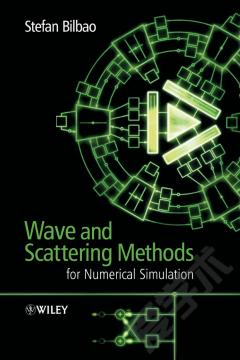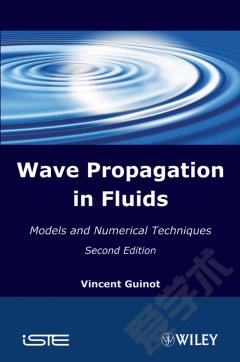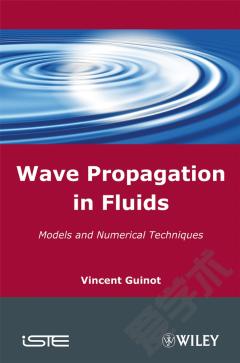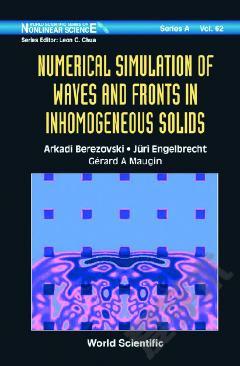Wave and Scattering Methods for Numerical Simulation
Preface.Foreword.1. Introduction.1.1 An Overview of Scattering Methods.1.1.1 Remarks on Passivity.1.1.2 Case Study: The Kelly-Lochbaum Digital Speech Synthesis Mode.1.1.3 Digital Waveguide Networks.1.1.4 A General Approach: Multidimensional Circuit Representations and Wave Digital Filters.1.2 Questions.2. Wave Digital Filters.2.1 Classical Network Theory.2.1.1 N-ports.2.1.2 Power and Passivity.2.1.3 Kirchhoff's Laws.2.1.4 Circuit Elements.2.2 Wave Digital Elements and Connections.2.2.1 The Bilinear Transform.2.2.2 Wave Variables.2.2.3 Pseudopower and Pseudopassivity.2.2.4 Wave Digital Elements.2.2.5 Adaptors.2.2.6 Signal and Coefficient Quantization.2.2.7 VectorWave Variables.2.3 Wave Digital Filters and Finite Differences.3. Multidimensional Wave Digital Filters.3.1 Symmetric Hyperbolic Systems.3.2 Coordinate Changes and Grid Generation.3.2.1 Structure of Coordinate Changes.3.2.2 Coordinate Changes in (1 +1)D.3.2.3 Coordinate Changes in Higher Dimensions.3.3 MD-passivity.3.4 MD Circuit Elements.3.4.1 The MD Inductor.3.4.2 OtherMD Elements.3.4.3 Discretization in the Spectral Domain.3.4.4 Other Spectral Mappings.3.5 The (1 +1)D Advection Equation.3.5.1 A Multidimensional Kirchhoff Circuit.3.5.2 Stability.3.5.3 An Upwind Form.3.6 The (1 +1)D Transmission Line.3.6.1 MDKC for the (1 + 1)D Transmission Line Equations.3.6.2 Digression: The Inductive Lattice Two-port.3.6.3 Energetic Interpretation.3.6.4 A MDWD Network for the (1 + 1)D Transmission Line.3.6.5 Simplified Networks.3.7 The (2 +1)D Parallel-plate System.3.7.1 MDKC and MDWD Network.3.8 Finite-difference Interpretation.3.8.1 MDWD Networks as Multistep Schemes.3.8.2 Numerical Phase Velocity and Parasitic Modes.3.9 Initial Conditions.3.10 Boundary Conditions.3.10.1 MDKC Modeling of Boundaries.3.11 Balanced Forms.3.12 Higher-order Accuracy.4. Digital Waveguide Networks.4.1 FDTD and TLM.4.2 Digital Waveguides.4.2.1 The Bidirectional Delay Line.4.2.2 Impedance.4.2.3 Wave Equation Interpretation.4.2.4 Note on the Different Definitions of Wave Quantities.4.2.5 Scattering Junctions.4.2.6 Vector Waveguides and Scattering Junctions.4.2.7 Transitional Note.4.3 The (1 +1)D Transmission Line.4.3.1 First-order System and the Wave Equation .4.3.2 Centered Difference Schemes and Grid Decimation.4.3.3 A (1+1)D Waveguide Network.4.3.4 Waveguide Network and the Wave Equation.4.3.5 An Interleaved Waveguide Network.4.3.6 Varying Coefficients.4.3.7 Incorporating Losses and Sources.4.3.8 Numerical Phase Velocity and Dispersion.4.3.9 Boundary Conditions.4.4 The (2 +1)D Parallel-plate System.4.4.1 Defining Equations and Centered Differences.4.4.2 The Waveguide Mesh.4.4.3 Reduced Computational Complexity and Memory Requirements in the Standard Form of the Waveguide Mesh.4.4.4 Boundary Conditions.4.5 Initial Conditions.4.6 Music and Audio Applications of Digital Waveguides.5. Extensions of Digital Waveguide Networks.5.1 Alternative Grids in (2 +1)D.5.1.1 Hexagonal and Triangular Grids.5.1.2 The Waveguide Mesh in Radial Coordinates.5.2 The (3 + 1)D Wave Equation and Waveguide Meshes.5.3 The Waveguide Mesh in General Curvilinear Coordinates.5.4 Interfaces between Grids.5.4.1 Doubled Grid Density Across an Interface.5.4.2 Progressive Grid Density Doubling.5.4.3 Grid Density Quadrupling.5.4.4 Connecting Rectilinear and Radial Grids.5.4.5 Grid Density Doubling in (3 +1)D.5.4.6 Note.6. Incorporating the DWN into the MDWD Framework.6.1 The (1 +1)D Transmission Line Revisited.6.1.1 Multidimensional Unit Elements.6.1.2 Hybrid Form of the Multidimensional Unit Element.6.1.3 Alternative MDKC for the (1+1)D Transmission Line.6.2 Alternative MDKC for the (2 + 1)D Parallel-plate System.6.3 Higher-order Accuracy Revisited.6.4 Maxwell's Equations.7. Applications to Vibrating Systems.7.1 Beam Dynamics.7.1.1 MDKC and MDWDF for Timoshenko's System.7.1.2 Waveguide Network for Timoshenko's System.7.1.3 Boundary Conditions in the DWN.7.1.4 Simulation: Timoshenko's System for Beams of Uniform and Varying Cross-sectional Areas.7.1.5 Improved MDKC for Timoshenko's System via Balancing.7.2 Plates.7.2.1 MDKCs and Scattering Networks for Mindlin's System.7.2.2 Boundary Termination of the Mindlin Plate.7.2.3 Simulation: Mindlin's System for Plates of Uniform and Varying Thickness.7.3 Cylindrical Shells.7.3.1 The Membrane Shell.7.3.2 The Naghdi-Cooper System II Formulation.7.4 Elastic Solids.7.4.1 Scattering Networks for the Navier System.7.4.2 Boundary Conditions.8. Time-varying and Nonlinear Systems.8.1 Time-varying and Nonlinear Circuit Elements.8.1.1 Lumped Elements.8.1.2 Distributed Elements.8.2 Linear Time-varying Distributed Systems.8.2.1 A Time-varying Transmission Line Model.8.3 Lumped Nonlinear Systems in Musical Acoustics.8.3.1 Piano Hammers.8.3.2 The Single Reed.8.4 From Wave Digital Principles to Relativity Theory.8.4.1 Origin of the Challenge.8.4.2 The Principle of Newtonian Limit.8.4.3 Newton's Second Law.8.4.4 Newton's Third Law and Some Consequences.8.4.5 Moving Electromagnetic Field.8.4.6 The Bertozzi Experiment.8.5 Burger's Equation.8.6 The Gas Dynamics Equations.8.6.1 MDKC and MDWDF for the Gas Dynamics Equations.8.6.2 An Alternate MDKC and Scattering Network.8.6.3 Entropy Variables.9. Concluding Remarks.9.1 Answers.9.2 Questions.A. Finite Difference Schemes for the Wave Equation.A.1 Von Neumann Analysis of Difference Schemes.A.1.1 One-step Schemes.A.1.2 Multistep Schemes.A.1.3 Vector Schemes.A.1.4 Numerical Phase Velocity.A.2 Finite Difference Schemes for the (2 + 1)D Wave Equation.A.2.1 The Rectilinear Scheme.A.2.2 The Interpolated Rectilinear Scheme.A.2.3 The Triangular Scheme.A.2.4 The Hexagonal Scheme.A.2.5 Note on Higher-order Accuracy.A.3 Finite Difference Schemes for the (3 + 1)D Wave Equation.A.3.1 The Cubic Rectilinear Scheme.A.3.2 The Octahedral Scheme.A.3.3 The (3 + 1)D Interpolated Rectilinear Scheme.A.3.4 The Tetrahedral Scheme.B. Eigenvalue and Steady State Problems.B.1 Introduction.B.2 Abstract Time Domain Models.B.3 Typical Eigenvalue Distribution of a Discretized PDE.B.4 Excitation and Filtering.B.5 Partial Similarity Transform.B.6 Steady State Problems.B.7 Generalization to Multiple Eigenvalues.B.8 Numerical Example.Bibliography.Index.
{{comment.content}}








 京公网安备 11010802027623号
京公网安备 11010802027623号